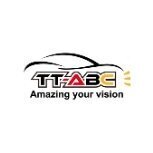-
Welcome to Auto Parts Forum
Whether you are a veteran automotive parts guru or just someone looking for some quick auto parts advice, register today and start a new topic in our forum. Registration is free and you can even sign up with social network platforms such as Facebook, X, and LinkedIn.
How To: Perform a Heavy Duty Headlight Restoration
-
Similar Content
-
- 0 replies
- 52 views
-
- 0 replies
- 64 views
-
- 0 replies
- 103 views
-
- 0 replies
- 92 views
-
- 0 replies
- 89 views
-
-
Similar Topics
-
By TT-ABC
TT-ABC produces various brands of car headlights and taillights. For example, Toyota (Camry, 4Runner, Land Cruiser, FJ Cruiser, Prado, Highlander, Avalon, CHR), Honda (Accord, Civic, Jazz, CR-V), BMW, Mercedes-Benz, Lexus, Ford, Tesla, Land Rover, Dodge, Chevrolet, Mitsubishi, Cadillac, Nissan, Hyundai, etc. We support bulk purchases and custom development. We launch new products every month. You can follow our social media accounts and our official website (search "TT-ABC" on Google). We have sales promotions on various platforms. You can search TT-ABC on various platforms to find us. Our company has always been known for its service. Our headlights and taillights have a one-year warranty and 24-hour quick response.
This is our official store:
link hidden, please login to view
-
By TT-ABC
TT-ABC produces Car headlight and taillight of various brands. Such as Toyota, Honda, BMW, Benz, Lexus, Ford, etc. We support bulk purchasing and custom development.
-




Recommended Posts
Join the conversation
You can post now and register later. If you have an account, sign in now to post with your account.
Note: Your post will require moderator approval before it will be visible.